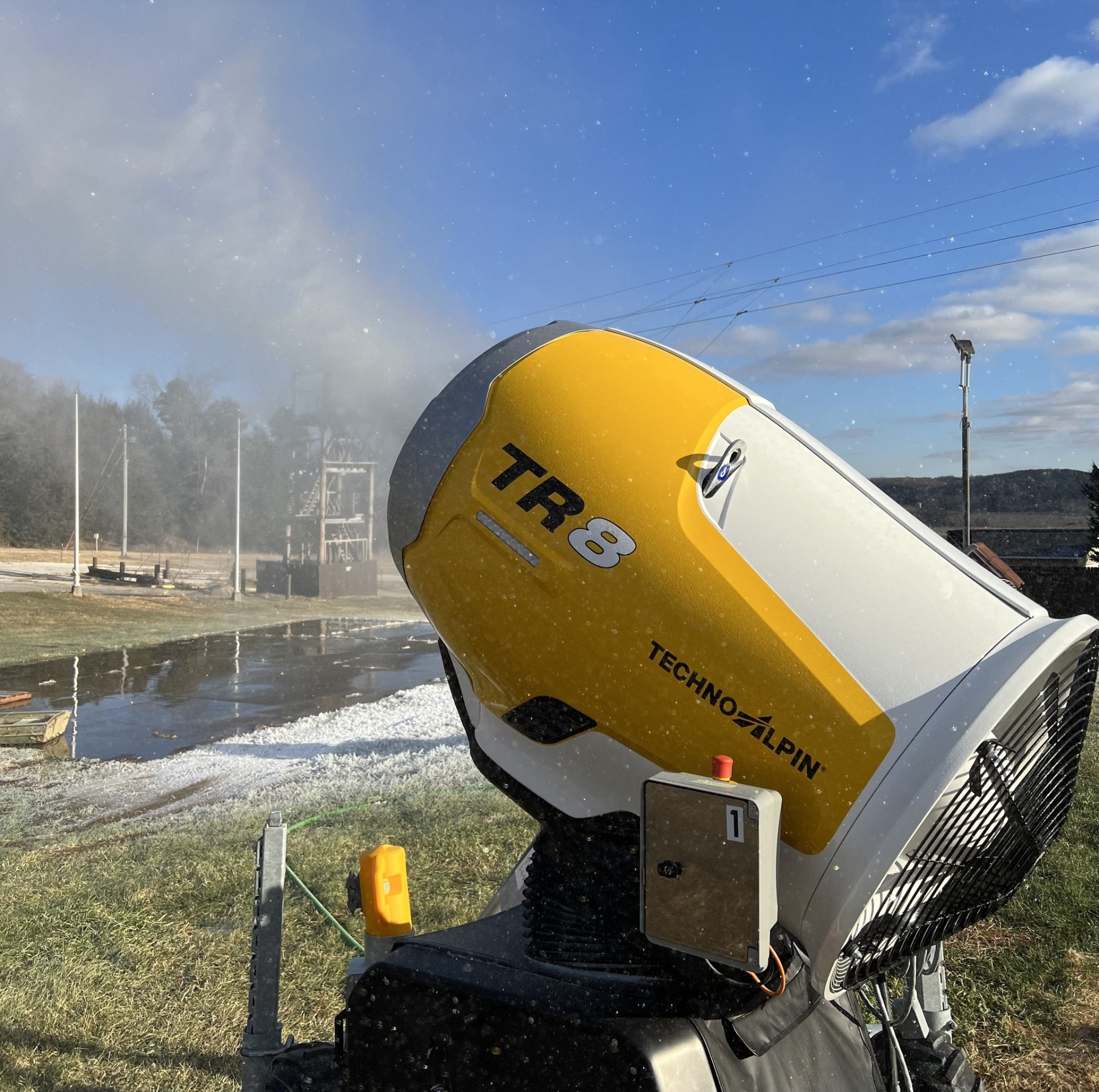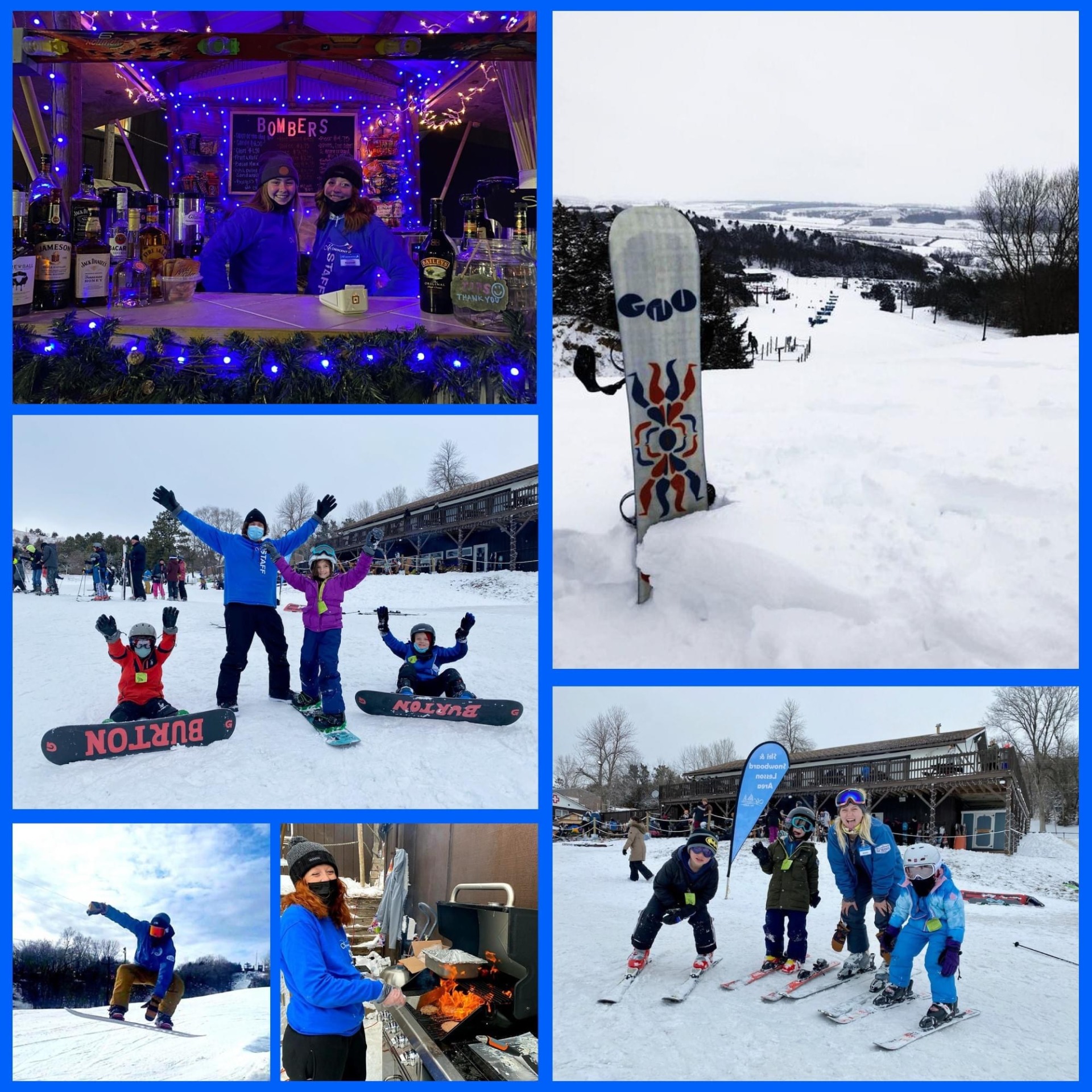These popular topics are heating up. Explore today's most viewed pages.
We asked Pottawattamie Conservation’s Site Manager for Mt. Crescent, Chris Andrew, what goes into snowmaking, what makes for the best snowmaking weather, and what you can expect this season. Get the scoop below!
We usually make snow around Thanksgiving. It takes more than a week to two weeks to get snow to what’s needed to open and run. Then we hope for cold weather and no rain!
We use three different types of snowmaking machines, two of which are mobile and can be moved around and another that is permanently fixed. The mobile snowmaking machines include TechnoAlpin TR8s and SMI Polecats, which we can move around to different runs and parts of the ski area, depending on the availability of power. We also use snowmaking sticks (they’re really called sticks!) that are placed along Easy Street.
TechnoAlpine TR8s and the SMI PoleCats can make snow when temperatures are slightly warmer, around 25 degrees wet bulb, whereas the snowmaking sticks can only make snow when it's very cold, usually under 15 degrees wet bulb.

All of the snowmaking machines run off of water pumped from the snowmaking pond, which is now three times larger for more snow and longer snowmaking sessions! They also require compressed air.

Our team generally bases our snowmaking decisions on the wet bulb temperature, which takes into account both temperature and humidity. Wet bulb temperature is always lower than dry bulb temperature (what most of us know as simply the temperature outside), unless the humidity is 100%.
For example, we usually begin looking at making snow at 26 degrees wet bulb, but ideally we’re looking at 24 degrees wet bulb or colder. However, if humidity is low (say, 5%) we can make snow at 30 degrees.
As a general rule, the lower the temperature and humidity, the better the snow!
Snowmaking is dependent on temperature, humidity, and wind speed and direction. As we talked about above, low temperature and humidity is essential, although we can make snow at slightly higher temperatures if the humidity is low.
Wind can also make or break a snowmaking session and gusts over 20 miles an hour can become very problematic and tend to blow snow away. High winds that constantly change direction can also complicate the process as it makes it difficult to place equipment in a location where snow will be able to accumulate.
Snowmaking efficiency begins to decline when wet bulb temperatures rise above 24 degrees, but even at 24 degrees wet bulb, we're not getting a lot out of our machines. When it rises above 26 degrees wet bulb we have to shut down.
The magic number we look for is 15 degrees wet bulb—that's when we really start to run efficiently and see piles build quickly.

Ah, a perfect snowmaking day! Our team gets especially excited when we see temperatures in the single digits, little to no wind, and very low humidity.
We have several tools we use to make this decision and rely heavily on the weather stations that are installed on the TechnoAlpin snowmaking machines. We also have an on-site weather station. In addition, we pay close attention to data and graphs from the National Weather Service that help us identify snowmaking windows and decide where to set up machines.
Once everything is set up and running two to three snowmakers can maintain everything. However, if the weather and wind are changing a lot during the snowmaking session then it requires more people to maintain quality snow and make any necessary adjustments.
We make snow entirely based on weather. This means we might be able to start machines early in the day, or it might dictate that we start later in the evening.
Most often we try to make snow overnight due to the colder temperatures. However, while cold temperatures are generally a good thing for snowmaking, extremely cold temperatures can make it significantly more difficult to deal with any problems that might arise.
Haven't snagged your season pass yet? It's not too late. Get yours today, here.
